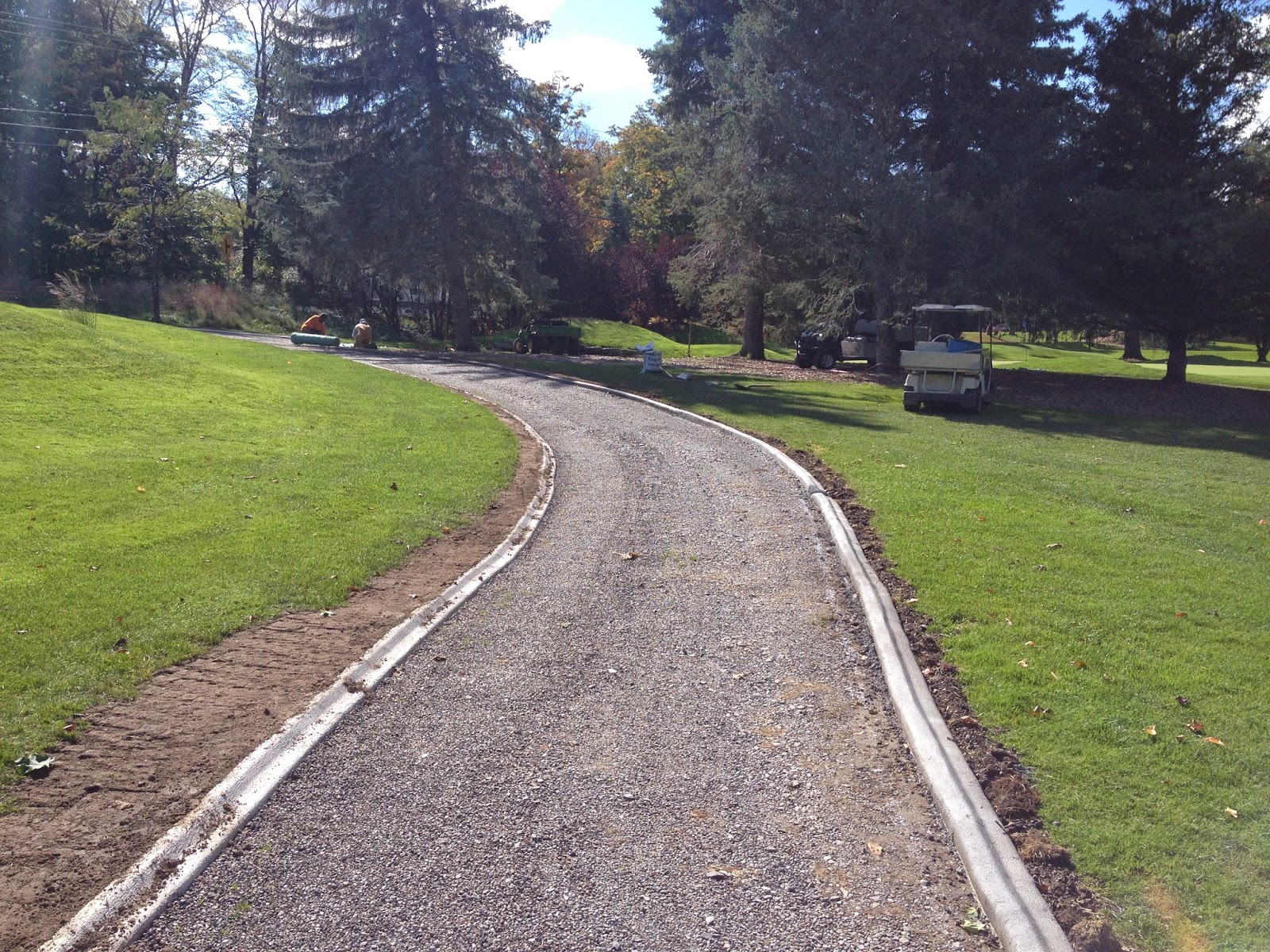 | ||||
| 10 Green |
Since then, we've taken a couple different swings at the problem in hope to relieve the water that pools there without having to strip and re-grade the entire back of the green. Unfortunately, those attempts didn't work as well as we expected and we still have those weak areas.
Today, Monday October 13th, we'll begin the work that will fix the grade issue once and for all. We're doing this because the water that pools there creates weak enough turf that it becomes susceptible to winterkill, heat, and disease damage.
These spots will be raised and a smooth slope will be created so water makes it's way off the right and front of the green.
Expect the back half of the green to be out of play for the rest of the year. All repairs will be healed and playable by opening day next year. I'll post progress pics through the next two months.
Curbing
12 tee was the next spot we used our curb extruder. This gives the path a neater look, keeps the stone corralled, and makes the path easier to maintain. Next on the list is 18 tee and possibly 5 green to 6 tee.
The curbs are good looking, long-lasting, and inexpensive to put in. By most accounts, these are a win for the club in affordable traffic control.
Bunker Blues
The biggest complaint we get is "the bunkers are xxxx". And for the most part, it's a legitimate complaint. Our bunkers are small and not suited to the machine raking they get, yet we use the machine when our summer crew is gone because that's what we've always done. We do it to ourselves, mostly. Adding more sand doesn't help the problem and only makes the bunker edges distorted as excess sand is pushed outward and away from where you want it (see the raised lip of the bunkers in pictures above).
In 2015 we'll reposition sand and add new if absolutely necessary. We'll fix the distorted edges then hand-rake for the entire season to improve the condition and consistency.
The sand consistency we maintain for is an inch of loose sand over a firm hard sand floor. Our bunker sand feels "hard" on purpose. Some players may mistake this for "dirt" or not enough sand. The sand we use compacts nicely by design, and needs to. A compacted sand stays on our steep bunker faces and is a necessity. Softer fluffy sand that some people like (popular in Florida and at newer courses) would not be a good choice at Tuscarora for more reasons that I have room to write about here.
The above picture shows a bunker that's impractical for the bunker raking machine to enter. As you'd expect, the bunker edge is intact and defined. It's a bunker that doesn't get complaints about lack of sand.
Hand-raking, exclusively, keeps sand where it's needed instead of being mechanically pushed to the outside.
Shelter Idea
This is a rain shelter design I saw in Cleveland, recently, that looked functional and inexpensive. We have a few shelters on our course that are reaching the end of their usable life. As we contemplate their replacements, I'll use the blog as a place marker for shelter designs.






